QCN 9074 / 9024 WiFi 6E 11ax 4x4 WiFi Module and new Mediatek MT7915 WiFi 6 miniPCIE modules
- Do you like Meditek WiFi6 modules ? We developped new DBDC (Dual Band Dual Concurrent) WiFi6 module for heavy load applications based on Mediatek MT7915-DAN chipset ! Please read our test repport for these modules.
Sparklan WPEQ-405AX
4×4 MU-MIMO WiFi 6 module for the 5GHz band, Mini PCIe Module, Qualcomm Atheros QCN9074, 4T4R
The first WiFi-6 (802.11ax) Qualcomm based AP solution on module formfactor from SparkLAN. WPEQ-405AX, is based on QCN9074 chipset solution. This is a true enterprise based wireless module that powers 4T4R (4×4) MU-MIMO, in 5Ghz Single band mode, hitting a theoretical speed of up to 4.8Gbps with 160MHz support.
Unlike typical Qualcomm reference design around QCN9074 (PN02.1), WPEQ-405AX shrink the traditional 50mmx50mm M.2 E-Key design to a more popular Mini PCIe Full size formfactor of just 50mm x 30mm, run at 3.3V voltage. Provides a greater versatility to use on more common seen design.
WPEQ-405AX performs both AP and STA functionality with 4 spatial streams, although recommended more for hardware AP applications as it supports 4096-QAM, OFDMA technology, makes it perfect for heavy lifting applications such as Enterprise grade AP, UTM, public & transportation Hotspot, and other industrial capable Access Points.
Wallys QCN9074 WiFi 6 and WiFi 6E 11ax 4x4 WiFi Dual band and Tri Band Module Available now (5 + 6 GHZ) !
Wallys DR9074 5G , 6E dual band and Triband modules and available for order ! And special promo price for partners with MOQ100pcs is USD 80 per module only ! Nokia, facebook and many more already started to use this card to develop own WiFi 6 / WiFi 6E devices!
- How we make QCA QCN9074 Wlan WiFi 6 module DR9074 4x4 work on X86 Linux platform - please read here.
|
QCN9074 VS QCN9024 | WIFI6E IOT 4X4 TRIBAND 2.4G 5G 6G NETWORK CARD AND APPLICATION
WHAT ARE THE APPLICATIONS OF AN INDUSTRIAL TRI-BAND NETWORK CARD SUPPORTING 2.4GHZ, 5GHZ, AND 6GHZ?
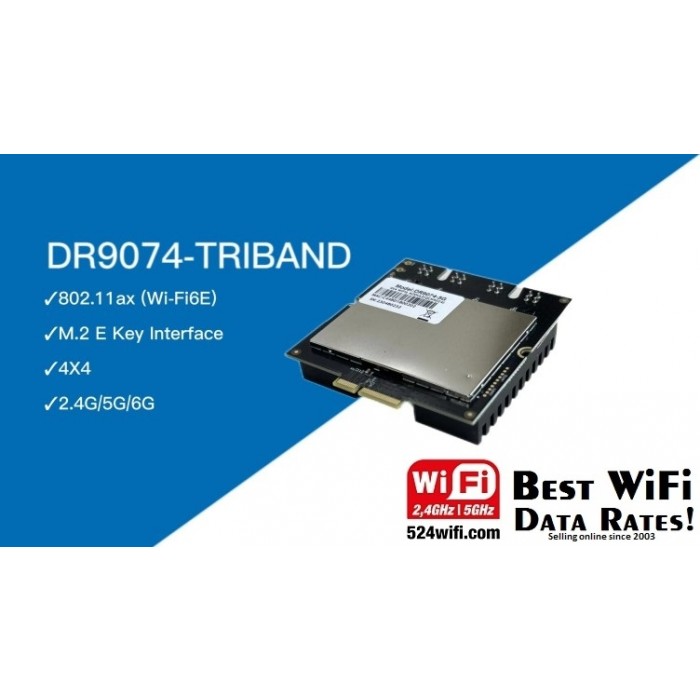
Imagine the boundless possibilities that come with an industrial Tri-Band network card, seamlessly embracing the 2.4GHz, 5GHz, and lightning-fast 6GHz frequency bands. Here's a glimpse into the exciting realms of its potential applications:
1. Smart Manufacturing & IoT Revolution: In the heart of smart manufacturing, these Tri-Band cards orchestrate a symphony of devices. From factory robots to floor sensors, they unite the Internet of Things (IoT) to make real-time data analytics and intelligent production a reality.
2. Robotic Precision & Automation: When it comes to industrial robots and automated machinery, precision and speed are paramount. Tri-Band network cards deliver high-speed data transfers and unwavering connections, ensuring uninterrupted automation.
3. Surveillance with Clarity: Industrial sites demand top-tier security. Tri-Band cards support high-definition video streams, fortifying security systems. They extend the eyes and ears of surveillance networks, enhancing vigilance.
4. Scientific Excellence: In the world of scientific research and high-performance computing, these network cards are the lifeline. They enable lightning-fast data transfer, facilitating experiments, simulations, and data analysis at astonishing speeds.
5. Connecting the Unreachable: When it's about connecting distant devices in remote locations, Tri-Band cards are the bridge. They make remote monitoring, diagnostics, and maintenance a breeze, minimizing downtime.
6. Agriculture & Environmental Guardians: In the fields of agriculture and environmental monitoring, they enable large-scale sensor networks. These networks collect invaluable data for better decision-making, crop management, and environmental preservation.
7. Aerospace & Beyond: Think of satellite communications and aerospace ventures. Tri-Band cards empower high-speed data exchanges between spacecraft, satellites, and ground stations, venturing into the far reaches of the cosmos.
With the 6GHz band, an integral part of the WiFi 6E, industrial Tri-Band network cards offer an abundance of spectrum resources. They cater to the insatiable appetites of high bandwidth and low latency. The future of industrial connectivity shines brighter than ever before!
WALLYS WIFI6E IIOT 4X4 TRIBAND 2.4G 5G 6G NETWORK CARD:DR9074
Both the QCN9074 and QCN9024 are Qualcomm chips, and Wallys has chosen this platform for the development of Tri-Band card due to its exceptional stability and superior performance.
Let me share the fascinating story of its inception. Before the advent of the remarkable DR9074 Tri-Band Network card, Wallys had already pioneered single-band network cards like the DR9074-2.4G, DR9074-5G, and DR9074-6E, each earning a reputation for top-notch performance.
Then came an intriguing request from one of our valued customers: 'The DR9074-5G and DR9074-6E deliver exceptional performance; do you have plans for a Tri-Band version of this card?' As an innovation-centric company, this question ignited a spark among our engineers.
Fuelled by passion and driven by the pursuit of excellence, our engineers toiled day and night. And voilà, Wallys proudly presents the DR9074 Tri-Band Network card, a testament to our commitment to innovation and customer satisfaction.
Now, let's dive into the exciting features of this groundbreaking card!
DR9074-TRIBAND
■ Qualcomm Atheros QCN9024
■ Maxim 23 dBm per chain,up to 4949Mbps
■ Data Rateup to 4949Mbps
■ Support Tri Band 2.4GHz&5GHz&6GHz 4x4 WiFi 6E (802.11ax)
■ 4 spatial streams (4SS)
■ M.2 E Key Interface
■ PCI Express 3 .0 Interface
Symbol/Parameter
Chipset:Qualcomm Atheros QCN9024
WLAN Host Interface:PCI Express 3.0 Interface
System Memory:2Mbit serial I²C bus EEPROM
Standard Operating Voltage:5V
Operating Systems:QSDK
Host Interface:M.2 E Key
Antenna Cable / Port:4 x MMCX Connectors,4T4R
Frequency Range:2.412GHz-2.472GHz & 5.18GHz-5.825GHz & 5.925GHz-7.125GHz
Data Rates for WALN:Maxim 23dBm per chain, up to 4949Mbps
Channel Spectrum Widths for WLAN:Support 20/40/80/160MHz
Modulation Techniques:OFDMA: BPSK, QPSK, DBPSK, DQPSK, 16-QAM, 64-QAM, 256-QAM, 1024-QAM, 4096-QAM
Temperature Range:
Operating: -20°C to 70°C,
Storage: -40°C to 90°C
Humidity
Operating: 5% to 95% (non-condensing),
Storage: Max. 90% (non-condensing)
Reference Design:PN02 .7
Power Consumption:TBD
Dimensions (WxHxD):57mm x 63mm x 6mm
- NEW 11AX BOARDS BASED ON QUALCOMM WITH MU-MIMO 802.11AX WIFI 6 RADIO ON BOARD! NOW WE SUPPORT 4G / 5G LTE GSM MODEMS!
- For wifi 6 we have developed the long distance function, in France Our customer can run 10km link! This function need modify the core of wifi protocol. We just find only 524WiFi.COM Wallys DR6018 QCA IPQ6018 boards get the wifi6 run on 3-10km distance!
New MULTI-FUNCTION IPQ6010 (IPQ6018 FAMILY) EMBEDDED BOARD WITH ON-BOARD WIFI DUAL BAND DUAL CONCURRENT / 802.11AX MU-MIMO OFDMA / 2* GE PORTS - DR6018
Features
Quad-core ARM 64bit A53@1.8GHz Processor 1GB DDRL3L System Memory 8MB NOR Flash, 256MB NAND Flash Supports Dynamic Frequency Selection (DFS 2x2On-board2.4GHz radio,upto 573Mbps physical Data Rate 2x2On-board 5GHz radio,upto 1201Mbps physical Data Rate
Support: QCN9074 WiFi 6E Card in M.2 slot
Product Description
DR6018-S based on IPQ6010 chipset is an enterprise wireless module integrated with 2x2 5G high power Radio module and 2x2 2.4G high power Radio module designed specifically to provide users with mobile access to high-bandwidth video streaming, voice, and data transmission for office and challenging RF environment in factories, warehouses establishment. Passive POE 24-48V supported, DC jack 24-48V. If you need 802.3af/bt active POE support , then please order DR6018-S HV version.
- For wifi 6 we have developed the long distance function, in France Our customer can run 10km link! This function need modify the core of wifi protocol. We just find only 524WiFi.COM Wallys DR6018 QCA IPQ6018 boards get the wifi6 run on 3-10km distance!
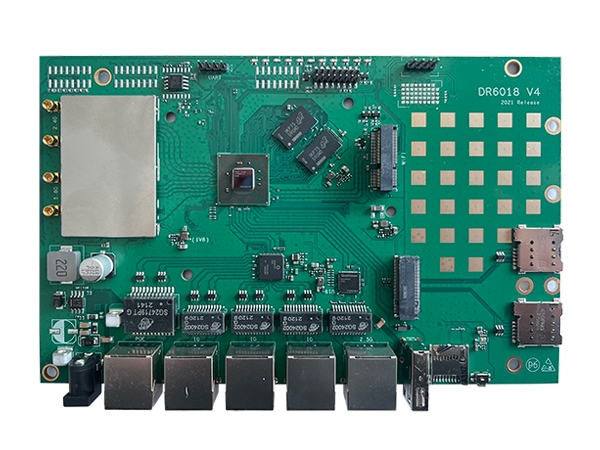
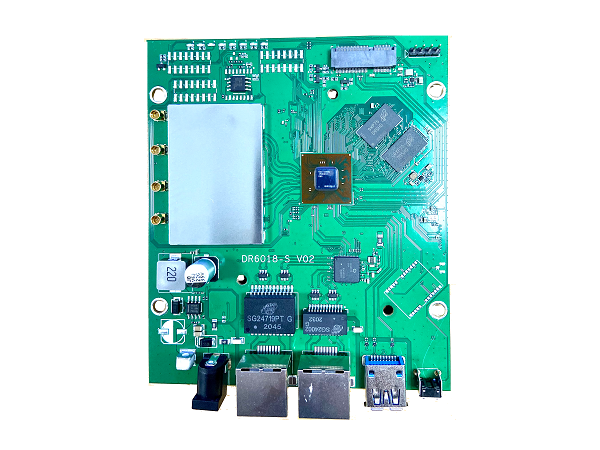
QCN9074-6E with DR6018 Platform: Achieving 1.5Gbps Speed in Throughput Test!
QCN9074-6E Throughput Test Report in DR6018
Are you curious about the performance capabilities of the QCN9074-6E network card in the DR6018?
Look no further! In this blog, we'll walk you through the hardware you'll need, how to set up one board as an Access Point (AP) and the other as a Station (STA), and perform a throughput test. Plus, we'll share our exciting conclusions.
Hardware Required:
DR6018 x2
DR9074-6E x2
SETTING UP THE TEST:
- Board Configuration: Install two DR6018 boards and two DR9074-6E network cards.
- Role Assignment: Set one DR9074-6E card as the Access Point (AP) and the other as the Station (STA).
- Network Connection: Utilize the onboard 2.5G Ethernet port for connectivity.

PERFORMING THE THROUGHPUT TEST:
Once the radios are linked, it's time to assess the performance:

CONCLUSION:

The results are nothing short of impressive. On average, the QCN9074-6E network card in the DR6018 achieves a remarkable speed of up to 1500 Mbps. This speed can be even faster in better environments or when used with the IPQ8072/8074 platform.
In summary, the QCN9074-6E in the DR6018 proves to be a high-performance choice for wireless connectivity. These results showcase the potential of our products, and we're thrilled to provide you with reliable and speedy wireless solutions.
IPQ6010 and IPQ8072:OFDMA support in Wifi6 Solution
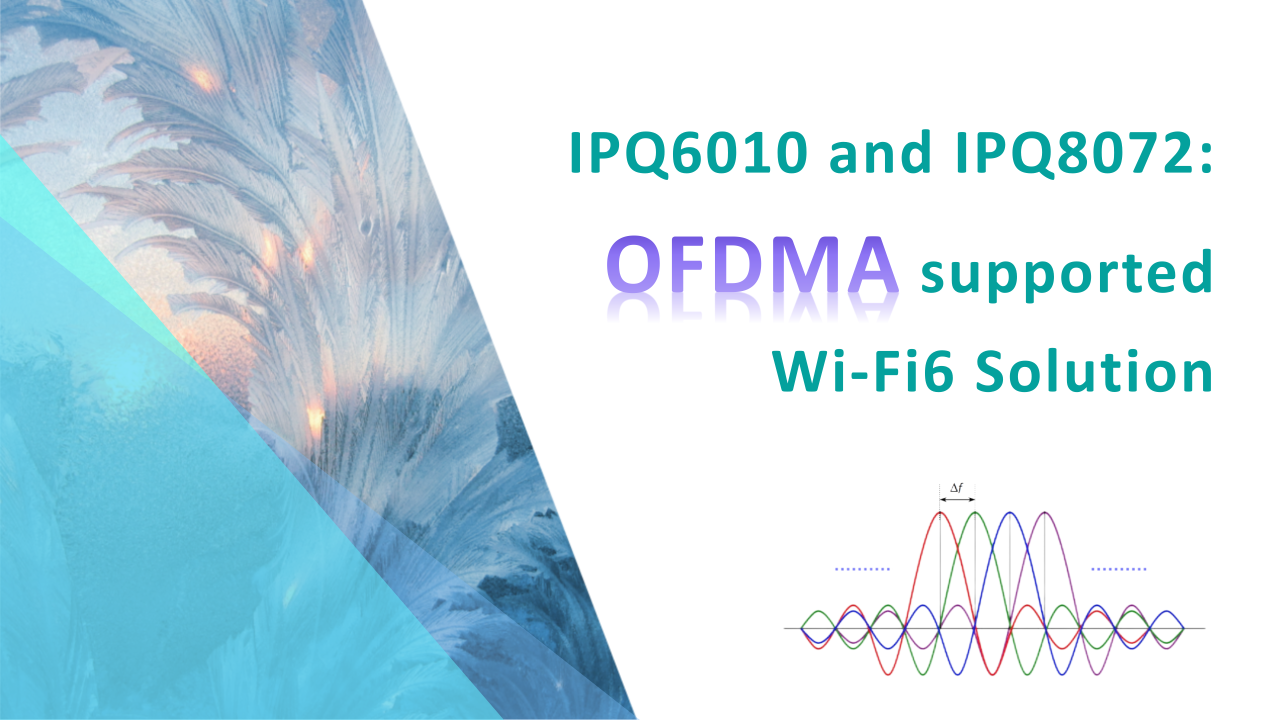
Introduction:
In the dynamic landscape of wireless communication, the techniques employed play a crucial role in optimizing data transmission and overcoming challenges. Two key technologies, FDMA (Frequency Division Multiple Access) and OFDMA (Orthogonal Frequency Division Multiple Access), are pivotal in this context. This blog aims to unravel the disparities between FDMA and OFDMA, shedding light on their applications and significance in mitigating multipath interference, particularly in the realm of Wi-Fi.
The Need for Multiple Carrier Technologies:
To comprehend the essence of OFDMA, it's imperative to first delve into the concept of OFDM (Orthogonal Frequency Division Multiplexing). OFDM is a multicarrier modulation technique designed to combat multipath interference encountered in wireless communication. Multipath interference occurs when radio waves encounter obstacles, causing reflections and refractions. This phenomenon results in multiple versions of the same signal reaching the receiver, leading to what is known as multipath interference.
The Challenge of Inter-Symbol Interference:
Multipath interference directly contributes to intersymbol interference (ISI). In the realm of wireless communication, ISI poses a challenge where, for a given set of serial signals, the receiver encounters difficulty distinguishing between them. This challenge arises when the time delay between two identical signals is less than the signal's transmission interval. The outcome is known as inter-symbol interference, making it arduous for the receiver to accurately decipher the intended signals.
OFDM as a Solution:
OFDM addresses this issue by transforming high-speed serial data into parallel low-speed data streams, thereby reducing inter-symbol interference. However, OFDM comes with its own set of drawbacks. In Wi-Fi 4/5, where communication is single-user-centric, each data transmission occupies all available subcarriers. This results in inefficiencies when small data packets, such as instant messages or web browsing, are transmitted, as the entire bandwidth is underutilized.
Introduction of OFDMA:
In response to this inefficiency, Wi-Fi 6 introduced OFDMA, borrowing a page from 5G's playbook. OFDMA, despite its name's resemblance to OFDM, is fundamentally a multiple access technique. Multiple access techniques distinguish different users, and common methods include FDMA, TDMA, and CDMA.
FDMA vs. OFDMA:
FDMA relies on allocating different frequency channels to different users. In the analogy of a gathering, it's akin to separating rooms for distinct conversations. On the other hand, OFDMA divides the channel into Resource Units (RUs), each orthogonal to the others. In our gathering analogy, OFDMA creates individual compartments within a room, facilitating multiple conversations simultaneously.
Enhancing Efficiency with OFDMA:
OFDMA optimizes spectral efficiency by scheduling users in specific resource units instead of utilizing the entire channel for a single user, as seen in traditional OFDM. It introduces a more flexible approach, akin to efficiently utilizing a delivery vehicle by allocating designated compartments for different recipients.
Conclusion:
In summary, while OFDM successfully addresses multipath interference by transforming data streams, OFDMA takes a step further by introducing an innovative multiple access technique. By adopting OFDMA, Wi-Fi 6 has elevated efficiency in point-to-multipoint communication, ensuring that a single cycle completes communication with multiple users. This evolution underscores the dynamic nature of wireless communication technologies, continually adapting to enhance performance and meet the demands of evolving applications.
Here are some of 524WiFi 802.11ax products support OFDMA:
DR6018:
Qualcomm-Atheros IPQ6010
Quad-core ARM 64bit A53 @1.8GHz Processor
1GB DDRL3L System Memory
32MB NOR Flash, 256MB NAND Flash
Supports Dynamic Frequency Selection (DFS)
2x2 On-board 2.4GHz radio, up to 573Mbps physical Data Rate
2x2 On-board 5GHz radio, up to 1201Mbps physical Data Rate
Support: QUECTEL RM500Q-GL
Support: QCN9074 WiFi 6E Card
Support Openwifi
Support QSDK
https://www.524wifi.com/index.php/catalogsearch/result/?q=6018
DR8072:
Qualcomm Atheros IPQ8072A AR Quad Core CPU
On-board 5GHz radio, up to 2475 Mbps physical data rate,On-board 2.4GHz radio, up to 1147Mbps physical data rate
8 MB NOR Flash, 256MB NAND Flash(NAND Flash can be up to 1GB as optional)
Support 11ax TX Beamforming,Support 11ac/ax MU-MIMO DL and UL,Support OFDMA DL and UL
Supports Dynamic Frequency Selection (DFS)
DDR 1GB DDR3L(Support DDR3L can be up to 2GB as optional)
M.2 connector can support QCN9074 production
https://www.524wifi.com/index.php/catalogsearch/result/?q=8072
DR9074-TRIBAND
Qualcomm Atheros QCN9024
Maxim 23 dBm per chain,up to 4949Mbps
Data Rateup to 4949Mbps
Support Tri Band 2.4GHz&5GHz&6GHz 4x4 WiFi 6E (802.11ax)
4 spatial streams (4SS)
M.2 E Key Interface
PCI Express 3 .0 Interface
524WiFi is dedicated to continuous innovation, constantly pushing the boundaries of WiFi technology. In addition to its hardware products, 524WiFi + Wallys also offer a range of ODM/OEM services, including:
Customization: 524WiFi and Wallys can customize their WiFi 5/6/7 modules and embedded boards to meet the specific needs of its customers.
Engineering support
Testing and certification






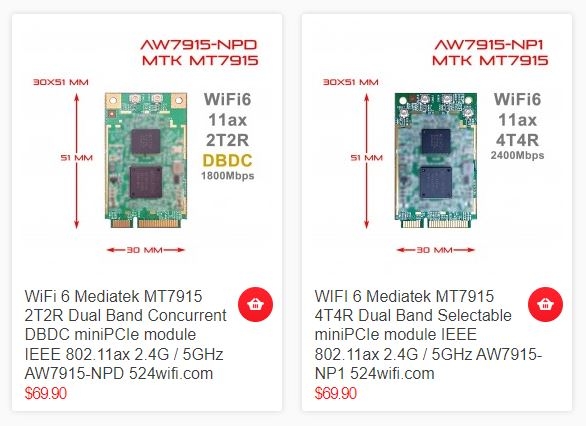
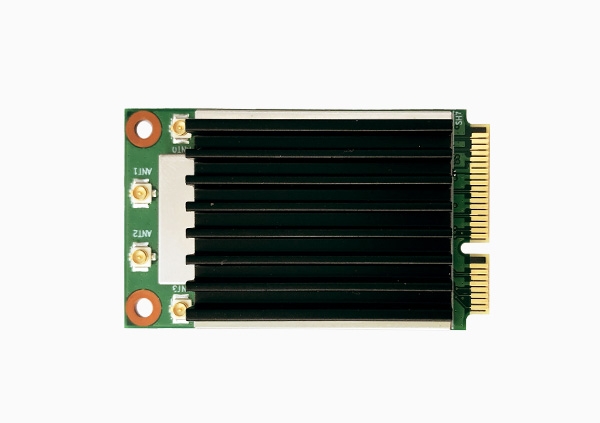
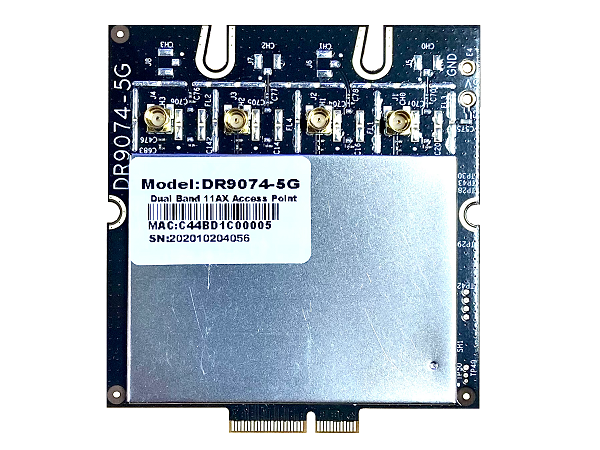

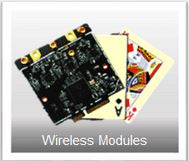


 $10 000 insurance per deal
$10 000 insurance per deal